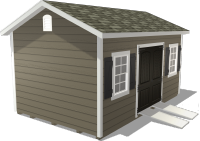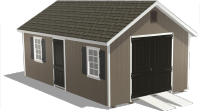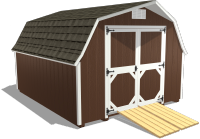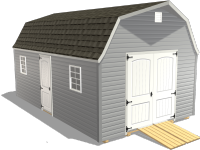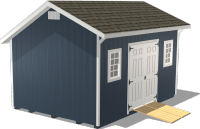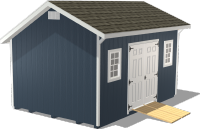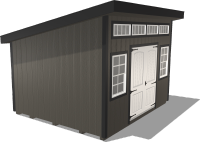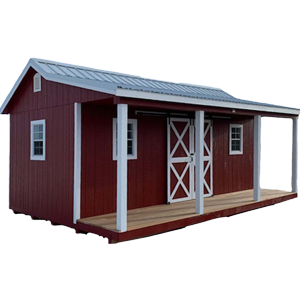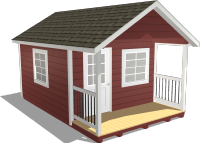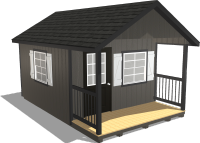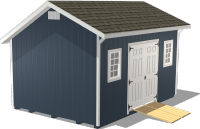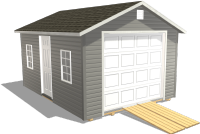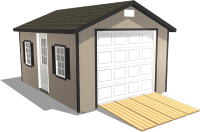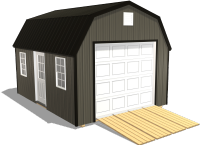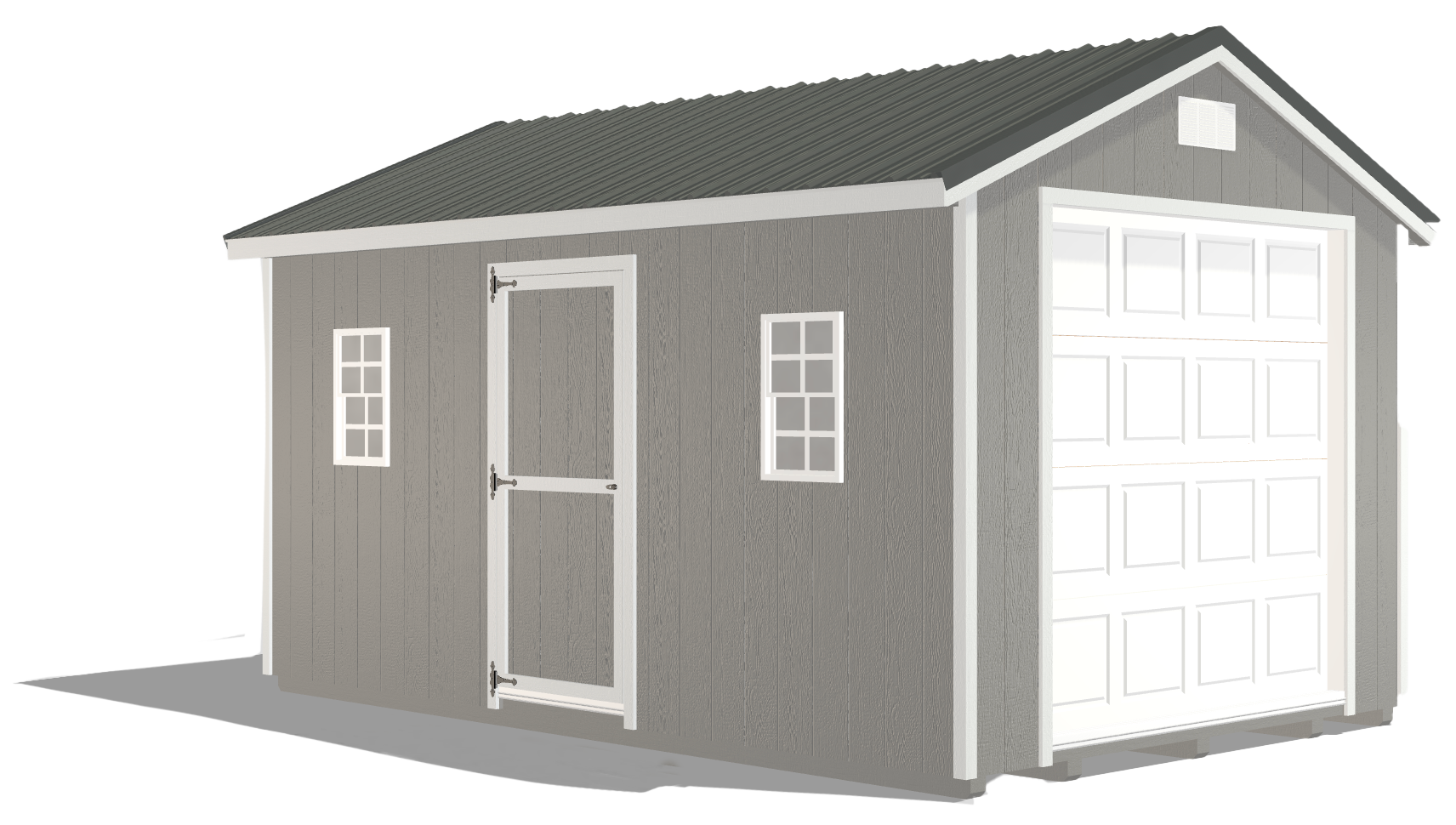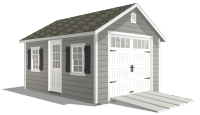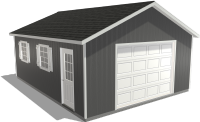Creating a Sewing and Quilting Shed: Your Guide to the Perfect Crafting Space
by Dakota Storage Buildings, on November 22, 2024

Having a dedicated space to fully immerse yourself in your craft or hobby can make all the difference. A great she shed idea is to convert it into a sewing and quilting studio that offers a personalized, well-organized environment that enhances creativity and productivity. Imagine walking into a space designed specifically for your needs, where every tool has its place, and you can leave your projects out without worrying about cleaning up every time you pause your work. A sewing shed gives you ample room to spread out and creates a quiet, inspiring retreat away from the distractions of daily life.
Setting Up Your Sewing Shed for Comfort and Efficiency
Positioning your sewing machine properly can prevent strain and keep you comfortable during long crafting sessions. Place your machine at a height that allows you to sit with your feet flat on the floor, your elbows at a 90-degree angle, and your back supported. A sturdy table or workbench can provide a stable surface and ample workspace for larger projects. We offer a workbench add-on for our sheds, which provides the perfect blend of durability and functionality.

Good lighting is crucial for detailed work, so ensure your sewing area is well-lit. Position your sewing machine near a window to take advantage of natural light, and add task lighting, like adjustable desk lamps, to brighten specific areas. Comfortable seating is also essential; consider investing in an adjustable chair with proper lumbar support to keep you comfortable during extended sewing sessions.
It is essential to have enough table space for cutting, pinning, and assembling projects. Consider setting up a separate cutting table or a fold-out work surface that can be tucked away when it is not in use. This additional space helps keep your workflow smooth and prevents your sewing area from becoming overcrowded. Adding a pressing station with a small ironing board nearby will also streamline your process, allowing you to press seams without leaving your workspace.
Fabric Storage Ideas to Keep Your Sewing Shed Organized
Sewing space organization keeps your fabric easily accessible, which is key to maintaining an efficient sewing space. Shelving units are a great option for storing fabric collections, allowing you to see your materials at a glance. Consider adjustable shelves to accommodate different fabric sizes, and use clear bins or baskets to keep similar fabrics together. You can also install shelves above workbenches to keep your most-used materials within arm’s reach.

If you have a larger fabric collection, cabinets or drawer systems can provide additional storage while keeping it protected from dust and sunlight. Labeled bins make it easy to sort fabric by color, type, or project, so you can quickly find what you need. If you prefer to keep your fabric visible, try the KonMari method of folding: fold the fabric into uniform sizes and store them upright in shallow drawers or baskets, like files in a filing cabinet. This method allows you to maximize your storage space while keeping your fabric neat and easy to browse.
Another creative storage solution is hanging racks, which can hold fabric on rolls or bolts. Hanging racks make it easy to access your fabric without disturbing neatly folded stacks and can be mounted on walls to free up floor space. Combining multiple storage methods will help you create a fabric organization system that works best for your needs.
Organizing Your Sewing Tools and Accessories
Sewing space organization keeps all your tools within easy reach, saving time and reducing frustration. Pegboards are a versatile solution for storing sewing supplies like scissors, rulers, and rotary cutters. Mount a pegboard on a wall above your sewing table, and use hooks, baskets, or magnetic strips to keep everything in place. This setup not only keeps tools accessible but also clears valuable workspace.

Wall-mounted organizers, such as shelves with built-in hooks or small cubbies, are another great way to keep smaller items together. Use these for storing thread, buttons, and needles. Divided containers or drawer organizers can also help you sort and store your supplies, making it easy to find exactly what you need when you need it.
Keep frequently used items close by using rolling carts or tabletop organizers that can move with you as you work. This keeps your sewing area adaptable and ensures that essential tools are always at your fingertips. Additionally, magnetic strips can be mounted on walls or tables to hold metal tools securely, keeping them visible and accessible.
Create a Functional Sewing Studio Layout
A well-thought-out layout can significantly impact your productivity and overall sewing experience. Start by designating specific zones for cutting, sewing, pressing, and assembling your projects. Position your cutting table near your fabric storage and ensure there is enough space to spread out materials. Place your sewing machine in a central area with easy access to both your cutting and pressing stations to create a seamless workflow.
In small hobby sheds, consider vertical storage solutions, such as wall-mounted shelves or overhead cabinets, to maximize space without crowding the floor. Foldable or collapsible furniture pieces can also help conserve space when not in use. For larger hobby sheds, take advantage of the extra room by setting up multiple workstations that cater to different aspects of your craft, allowing you to work on various stages of a project simultaneously. Whether your shed is large or small, aim for a layout that minimizes movement and keeps everything within reach. Having designated areas for each stage of your sewing and quilting process will help you stay organized and maintain a smooth flow from start to finish.
Turn Your Shed Into the Ultimate Sewing Studio

Creating a dedicated sewing and quilting shed can elevate your crafting experience, providing a space that is tailored to your needs and designed for creativity. By setting up your sewing machine thoughtfully, organizing your fabric and tools efficiently, and optimizing your layout, you can turn a simple hobby shed into the ultimate sewing shed. Not only will this improve your productivity, but it will also make your crafting sessions more enjoyable.
Ready to start dreaming up some she shed ideas and plan your perfect sewing and quilting shed? Download our “Shed Buying Workbook” to guide you through the process of selecting the ideal shed for your needs. With the right setup, your sewing shed will become a creative haven where your projects can truly come to life.



